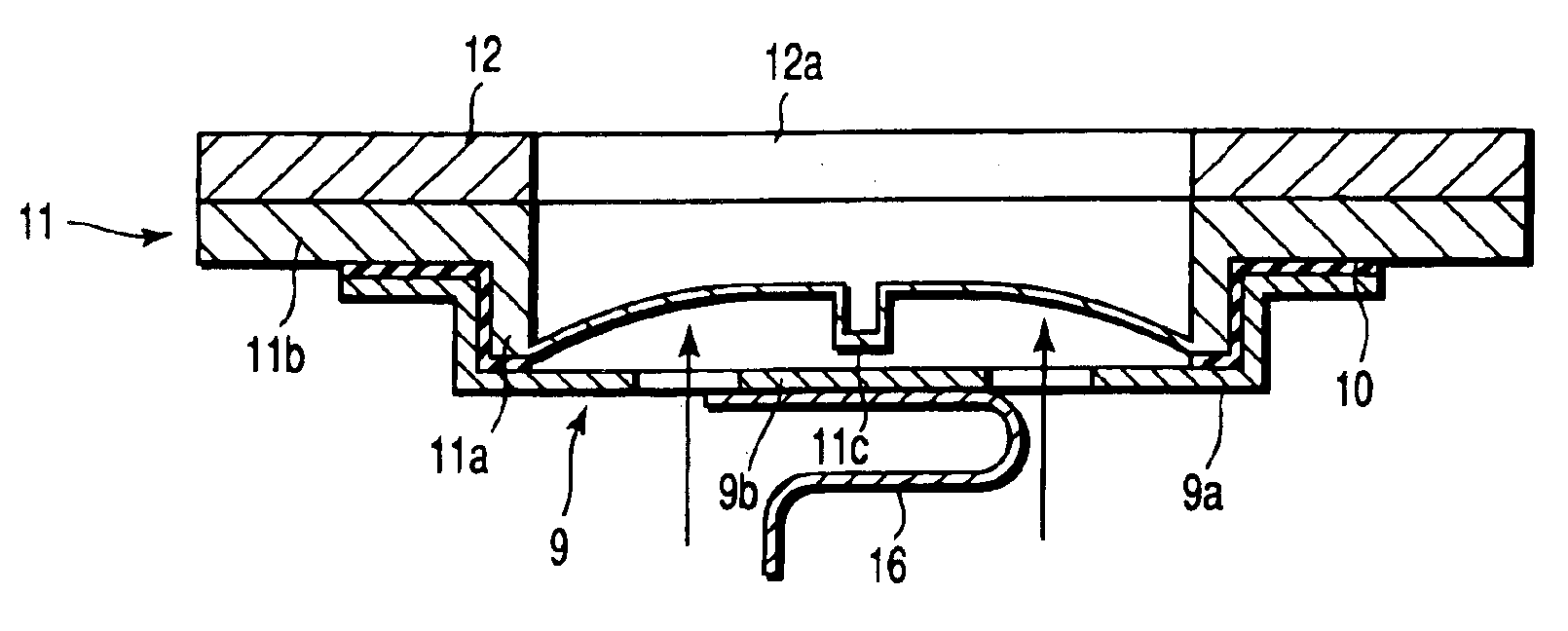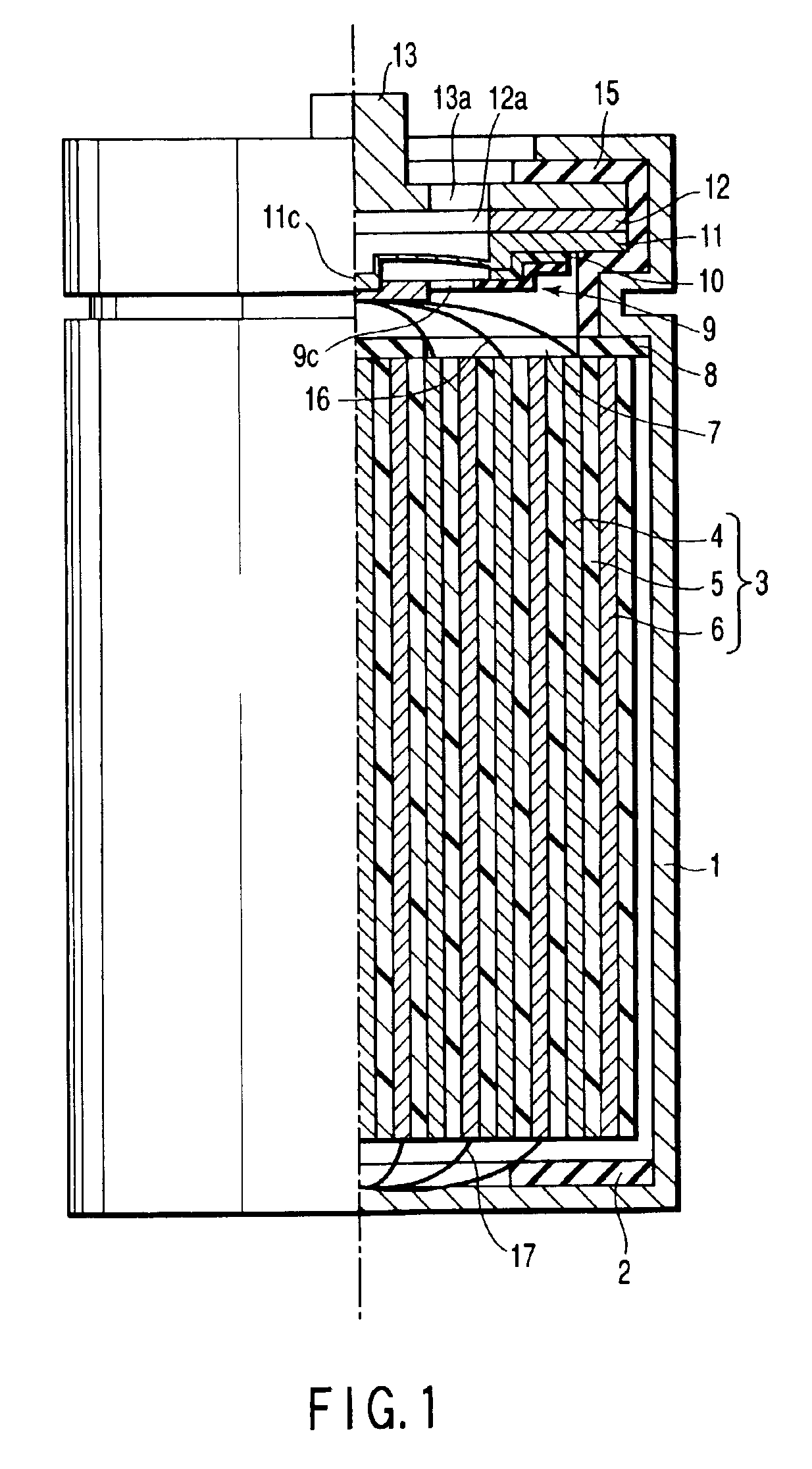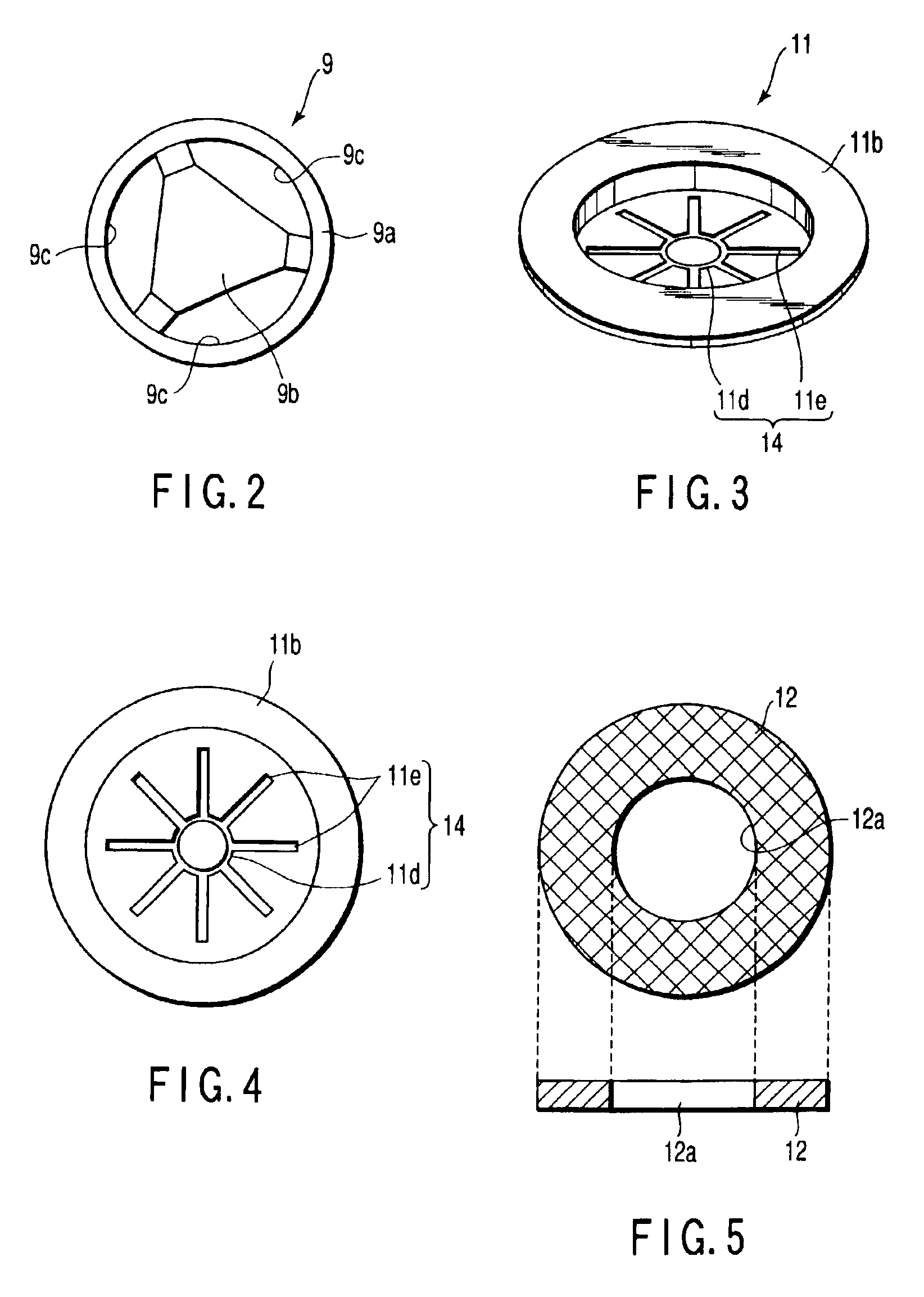Nonaqueous electrolyte secondary battery
a secondary battery and electrolyte technology, applied in the direction of secondary cell servicing/maintenance, cell components, cell component details, etc., can solve the problem of preventing the operation of the safety vent, and achieve the effect of preventing the explosion of the battery, preventing the non-uniform operation of the safety vent, and improving the reliability of the safety ven
- Summary
- Abstract
- Description
- Claims
- Application Information
AI Technical Summary
Benefits of technology
Problems solved by technology
Method used
Image
Examples
example 1
[0112]
[0113]Prepared was a conductive support plate shaped like an annular flat plate as shown in FIG. 5 and containing 100% by weight of nickel. The support plate was sized at 16.3 mm in the outer diameter, 9.8 mm in the diameter of the central hole, and 0.31 mm in the thickness. The size of the conductive support plate was substantially equal to that of the conventional PTC element. However, the conductive support plate did not have the PTC characteristics. Also, the nickel-containing support plate had an area resistance value RS at 20° C. of 0.21 μΩ·cm2.
[0114]Further, according to “International Tables of Selected Constants, 16, Metals, Thermal and Mechanical Data” given in Tables 1 and 2•3•1 on page 35 of “Kinzoku (Metal) Data Book, Second Revision” compiled by Nippon Metal Institute and published by Maruzen K. K. on Jan. 30, 1984, the modulus of elasticity (Young's modulus) at 25° C. of nickel, which is obtained by converting the unit “dyn / cm2” in the Table given above into “Pa...
example 2
[0127]Prepared was a nickel-containing support plate containing 100% by weight of nickel, having the outer diameter and the diameter of the central hole equal to those in Example 1 described above, and having a thickness of 0.5 mm. The area resistance value of the support plate at 20° C. was found to be 0.35 μΩ·cm2.
[0128]A cylindrical lithium-ion secondary cell (size of 18650) having a designed capacity of 1,500 mAh as one embodiment of the lithium-ion secondary battery was prepared as in Example 1, except that used was the nickel-containing support plate noted above as a conductive support plate and that the caulking height was adjusted to ensure the gastight condition inside the cell.
example 3
[0129]Prepared was an annular support plate containing 100% by weight of copper, and having the outer diameter, the diameter of the central hole, and the thickness exactly equal to those in Example 1 described above. The area resistance value of the support plate at 20° C. was found to be 0.05 μΩ·cm2.
[0130]Further, according to the literature “International Tables of Selected Constants, 16, Metals, Thermal and Mechanical Data” referred to previously, the modulus of elasticity (Young's modulus) at 25° C. of copper, which is obtained by converting the unit “dyn / cm2” in the Table given above into “Pa”, is 1.36×1011 Pa.
[0131]A cylindrical lithium-ion secondary cell (size of 18650) having a designed capacity of 1,500 mAh as one embodiment of the lithium-ion secondary battery was prepared as in Example 1, except that used was the copper-containing support plate noted above as a conductive support plate.
PUM
| Property | Measurement | Unit |
|---|---|---|
| thickness | aaaaa | aaaaa |
| thickness | aaaaa | aaaaa |
| thickness | aaaaa | aaaaa |
Abstract
Description
Claims
Application Information
 Login to View More
Login to View More - R&D
- Intellectual Property
- Life Sciences
- Materials
- Tech Scout
- Unparalleled Data Quality
- Higher Quality Content
- 60% Fewer Hallucinations
Browse by: Latest US Patents, China's latest patents, Technical Efficacy Thesaurus, Application Domain, Technology Topic, Popular Technical Reports.
© 2025 PatSnap. All rights reserved.Legal|Privacy policy|Modern Slavery Act Transparency Statement|Sitemap|About US| Contact US: help@patsnap.com



